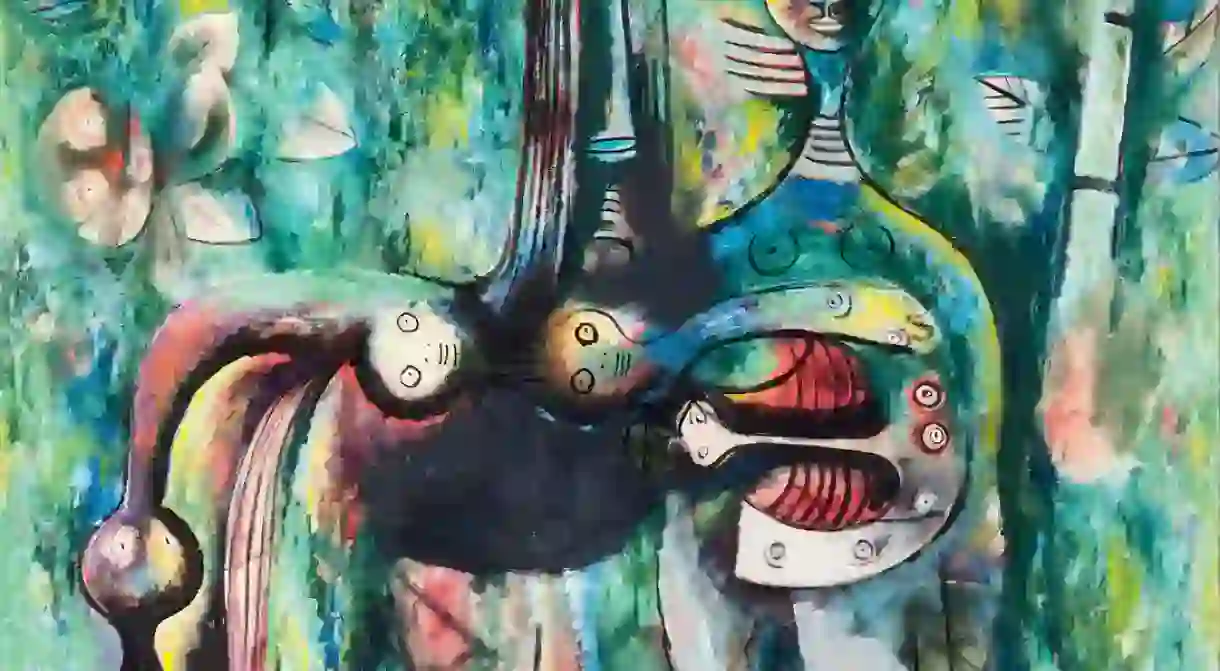Wifredo Lam: The Iconic Cuban Artist You Need To Know About

Arguably the most iconic Cuban artist of the 20th century, Wifredo Lam (currently the subject of a major retrospective at London’s Tate Modern) made a unique and lasting impact on the world of modern art. Coming from a rich, multi-cultural background, Wifredo travelled extensively around the world during periods of extreme political upheaval, working in an array of disciplines and styles during an astonishing six decade career. He may be remembered as a champion of Afro-Cuban art, but Lam, perhaps more than any other, was a truly global artist.
There are many who dub Lam as the ‘Cuban Picasso’. This may seem high praise but, as an artist who gave as much as he got, such a statement is to undermine his own, unparalleled, contribution. For though he was indeed influenced heavily by Picasso, who he met and grew close to during his time in Paris, Lam synthesised the many European traditions he was exposed to into something truly unique and enduringly influential.

Lam was born in a sugar farming district of Cuba in 1902 to a Chinese immigrant father and a mother who was descended from Spanish conquerors and African slaves. Having spent some time studying law and painting in Havana— as well as producing sketches of plants in the Botanical Gardens, an interest in the natural world which would form a large part of his later art— Lam left to study art in Madrid in 1923. During his time here, Lam would be introduced to both the classical European art tradition and avant-garde modernism, studying in formal classes by day and spending the evenings mixing and working in young, radical art circles. He would also put his talents to practical use during the Spanish Civil War, producing posters for the Republican forces, for whom he also fought.

Forced to leave Spain in 1938, Lam arrived in Paris, meeting Picasso, who introduced him to his artistic circle. The pair were impressed with, and inspired by, each other’s work, even exhibiting together in New York. During this period, though, Lam met several other major figures in the European art world. Matisse’s still lifes, the cubism of Picasso, the surrealism of André Breton and others, ancient Greek art and, crucially, the African art currently in vogue in Paris, all inspired and impacted upon his art.

Forced to escape to Marseilles in 1940 in the face of the German occupation of Paris, Lam returned home to Cuba in 1941, having spent 18 years abroad— what he found there, dismayed him. While corruption and poverty were rife, Lam was perhaps most perturbed by the racist treatment of the country’s black population. It was there that Lam’s signature style would develop, exploring Cuba’s Afro-Caribbean culture as a means of reasserting the value of the country’s African heritage. Lam’s painting blended European Cubism and Surrealism with what he had learned of African art in Europe, as well as the religious and cultural rituals and traditions he saw around him in the black communities in which he had grown up, creating vibrant, colourful pieces that combined the forms of animal, plants and humans.

Lam has been described as having ‘defined new ways of painting for a postcolonial world’; a confluence of modern styles, heritages and cultures, he developed a movement that was uniquely his own. Settling once more in Paris in 1952, Lam would continue to work and exhibit around the world until his death in 1982, splitting his time between Cuba, New York, France and Italy, and moving into sculpture, ceramics and prints. Now, Tate Modern’s exhibition aims to ‘reappraise Lam’s major works within the cultural and political context after he returned to Cuba’, examining the impact of his life experiences upon his distinct style of work, dissecting and placing within context the vivid imagery found therein— the hybrid female figures, occultist symbols and mask-life faces— and considering how his extraordinary works can bring ‘a historical perspective to contemporary issues’.
The EY Exhibition: Wifredo Lam will run until Sunday 8th January 2017. More information here.
📍Tate Modern, Bankside, London SE1 9TG, +44 20 7887 8888.













